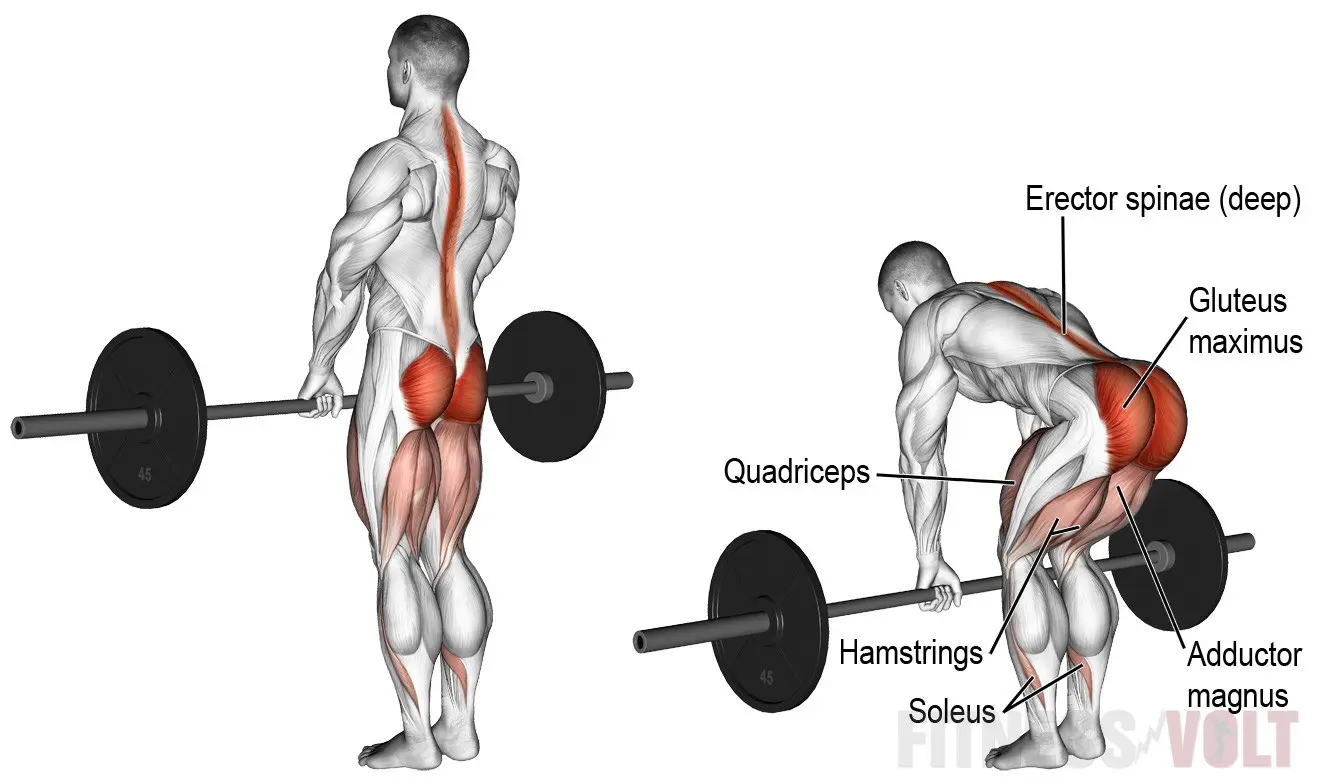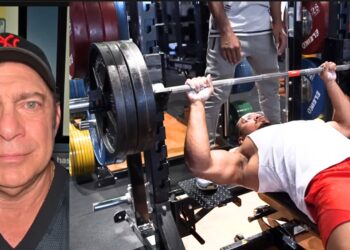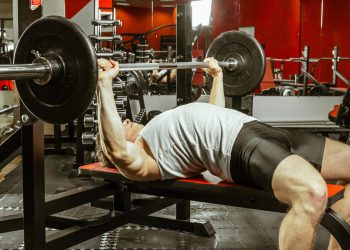When it comes to building muscle and strength, there are lots of different programs to choose from. The best workout for you depends on various factors, including your experience, the time you have available to train, and your fitness goals.
And while there is no perfect program that’s right for every lifter, the push-pull-legs plan is often considered one of the best.
In this guide, you’ll learn all about this popular training plan so you can decide if it’s the right one for you.
What is the push-pull-legs program?
Push-pull-legs (PPL) is not so much a set-in-stone program as it is a training split template. That means you can slot your favorite exercises into it, and modify the workouts according to your needs.
With the PPL split, you break your weekly workouts down like this:
- Workout one – pushing muscles, i.e., chest, shoulders, and triceps
- Workout two – pulling muscles, i.e., back, traps, and biceps
- Workout three – lower body
You can do each workout once per week, like this:
Level Up Your Fitness: Join our 💪 strong community in Fitness Volt Newsletter. Get daily inspiration, expert-backed workouts, nutrition tips, the latest in strength sports, and the support you need to reach your goals. Subscribe for free!
| Monday | Tuesday | Wednesday | Thursday | Friday | Saturday | Sunday |
| Push | Rest | Pull | Rest | Legs | Rest | Rest |
Or, twice a week, like this:
| Monday | Tuesday | Wednesday | Thursday | Friday | Saturday | Sunday |
| Push | Pull | Legs | Push | Pull | Legs | Rest |
You could also just keep doing the workouts in rotation across several weeks, like this:
| Mon. | Tue. | Wed. | Thu. | Fri. | Sat. | Sun. | |
| Week 1 | Push | Rest | Pull | Rest | Legs | Rest | Push |
| Week 2 | Rest | Pull | Rest | Legs | Rest | Push | Rest |
Choose the workout frequency that best suits your experience and your ability to recover. New exercisers will probably do best with just 3-4 workouts per week, whereas more advanced exercisers can train 5-6 times a week.
The six workouts per week version was one of Arnold Schwarzenegger’s favorite training routines.
Why PPL such an excellent training split?
The PPL workout has been popular for well over 70 years, and that means it works. But, why has this routine been so loved for so long?
There are four main reasons.
1. Minimal training overlap between workouts
If you train chest one day and shoulders the next, you end up hitting some of the same muscle groups twice in a row. That will make your second workout less productive. The same is true if you train back one day and biceps the next.
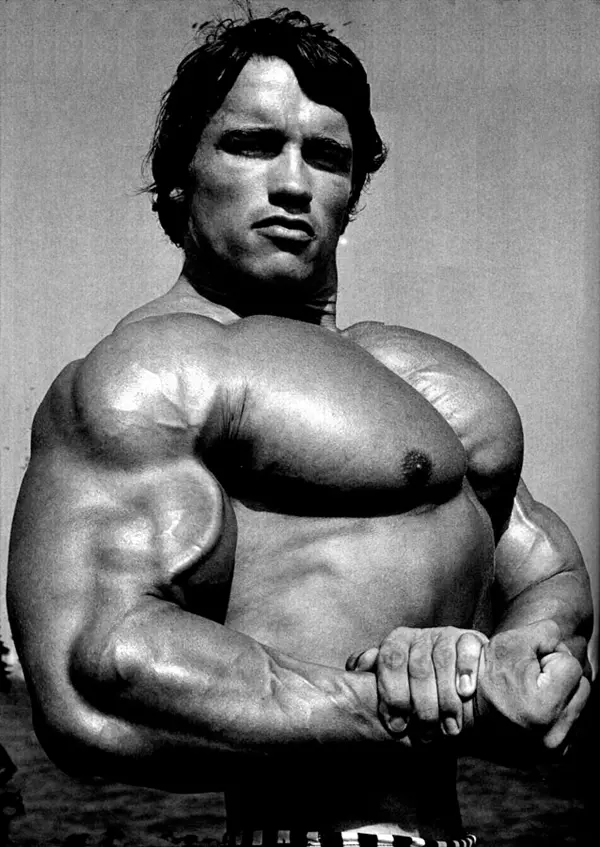
With the PPL program, you train all the similar muscle groups on the same day, and then don’t touch them again until you repeat that particular workout.
With less overlap and more rest, you should find you recover faster and make better progress, often with fewer aches and pains.
2. You can emphasize different muscle groups within any workout
While you can train each muscle group equally with PPL, you can also emphasize any weak areas should you need to do so.
For example, on push day, you could do three chest, three shoulder, and three triceps exercises. Or, you could do four chest exercises, two shoulder exercises, and three triceps exercises if you want to put more emphasis on your pecs.
Ultimately, it’s up to you how you distribute your chosen exercises, making this an easy workout to customize.
3. You can include different styles of training for the same muscle group
With PPL, you can train the same muscle group in different ways during any one week.
For example:
| Monday | Tuesday | Wednesday | Thursday | Friday | Saturday | Sunday |
| Push | Pull | Legs | Push | Pull | Legs | Rest |
| 8-12 reps | 8-12 reps | 8-12 reps | 4-6 reps | 4-6 reps | 4-6 reps | Rest |
This will allow you to work on two different training objectives at the same time.
4. You get a dedicated leg training day
A lot of bodybuilders are all too happy to skip leg day. That’s bad news because almost 50% of your muscle mass is in your lower body. Underdeveloped legs will take a lot away from your physique.
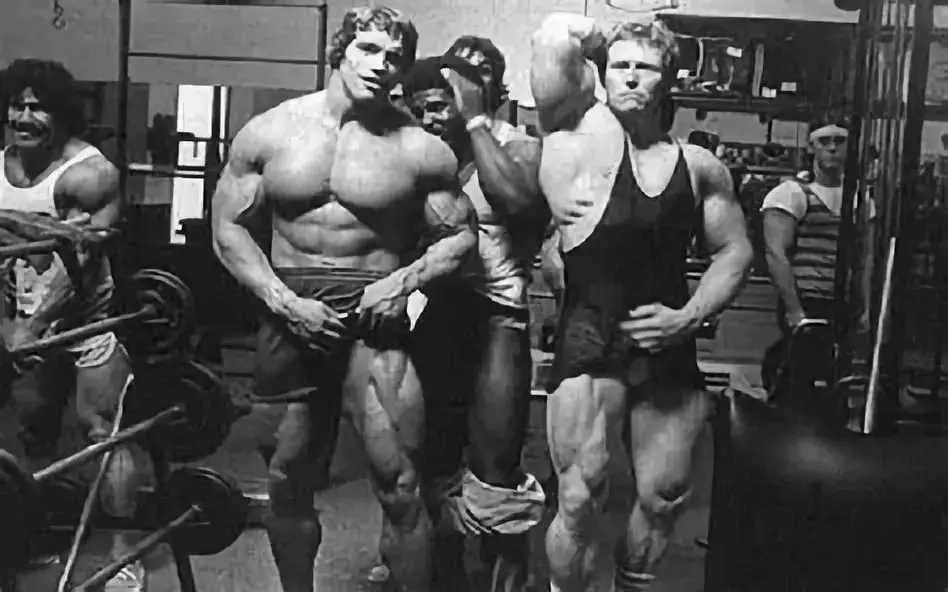
With PPL, one session is dedicated to working just your legs, so you will be less likely to skip training them.
If you get to the end of the week and are still tempted to miss your leg workout, try doing it first. For example, instead of doing push-pull-legs, you’ll do legs-push-pull instead. Not only will you have more energy at the start of the training week, but your motivation will be higher too. Training legs at the beginning of the week is never a bad idea!
What are the drawbacks of the PPL split?
There is no denying the effectiveness of the PPL split, but it does have a couple of drawbacks you need to be aware of before starting it. Those drawbacks are:
1. Lots of similar exercises in each workout
Look at this typical push workout:
- Bench press
- Incline dumbbell press
- Dumbbell flyes
- Barbell shoulder press
- Side raises
- Triceps pushdowns
- EZ skull crushers
Virtually every exercise involves the deltoids and triceps. This could mean that, as you get toward the middle and end of your workouts, you start to experience fatigue and are unable to do as many reps or use as much weight as usual.
The same thing can happen in the pull workout, as every back exercise also involves the biceps.
2. One missed workout will unbalance your training week
On paper, the PPL workout is very balanced, as each muscle group is trained the same number of times each week. But, if you miss a workout and don’t have time to catch it up, it could be a long time before you can train it again.
Because each PPL workouts involve several major muscles, this could have an impact on your progress.
3. Most PPL workouts involve a high volume of exercises and sets
PPL training is ideal for bodybuilders who want or need to do a high volume of training for maximal hypertrophy. You can do several exercises per muscle group to work each muscle from a variety of angles.
With an entire session dedicated to your pushing, pulling, or leg muscles, it’s almost inevitable you are going to cram a lot of volume into each session. If you are a beginner or find it hard to recover from long workouts, all that volume could be a problem.
4. Some exercises are harder to categorize
While most exercises fall neatly into the push, pull, or leg categories, some do not. Isolation exercises are harder to classify, as are complex exercises like cleans and presses (a pull and a push combined) and thrusters (legs and push).
If you are unsure, group your exercises by muscle group if not by movement. For example, side raises are a shoulder exercise and should be done on push day.
Ultimately, the PPL framework is a guide, and you may need to interpret it a little according to the exercises you want to include in your workouts.
Level Up Your Fitness: Join our 💪 strong community in Fitness Volt Newsletter. Get daily inspiration, expert-backed workouts, nutrition tips, the latest in strength sports, and the support you need to reach your goals. Subscribe for free!
Example push-pull-legs workout
PPL is a straightforward program to use; simply slot your chosen exercises into the PPL framework, and then adjust the frequency to suit your needs and recovery abilities. Simple!
But, to save you from having to do this yourself, here is a sample hypertrophy PPL workout to try.
Either follow it as it’s written or use it as a guide to create your own PPL workouts.
Remember to start every workout with a proper warm-up, including some light cardio, joint mobility and dynamic flexibility exercises, and a few light sets of the main exercises.
Push workout
- Barbell bench press – 3 sets of 8 reps
- Incline dumbbell bench press – 3 sets of 10 reps
- Cable flyes – 3 sets of 12 reps
- Seated dumbbell shoulder press – 3 sets of 10 reps
- Dumbbell side lateral raises – 3 sets of 12 reps
- Dips – 3 sets of 8 reps
- Triceps pushdowns – 3 sets of 12 reps
Exercise descriptions
1- Barbell bench press
- Lie on your back on the bench with your eyes directly under the bar. Reach up and grab it with an overhand, slightly wider than shoulder-width grip. Push your feet firmly into the floor, brace your abs, arch your lower back slightly, and pull your shoulders down and back.
- Unrack the bar and hold it over your chest.
- Without moving your feet, bend your arms, and lower the bar to lightly touch the high point of your chest. Tuck your elbows into your sides slightly as the bar descends.
- Drive the weight back up and repeat. Stop just short of locking your elbows.
2- Incline dumbbell bench press
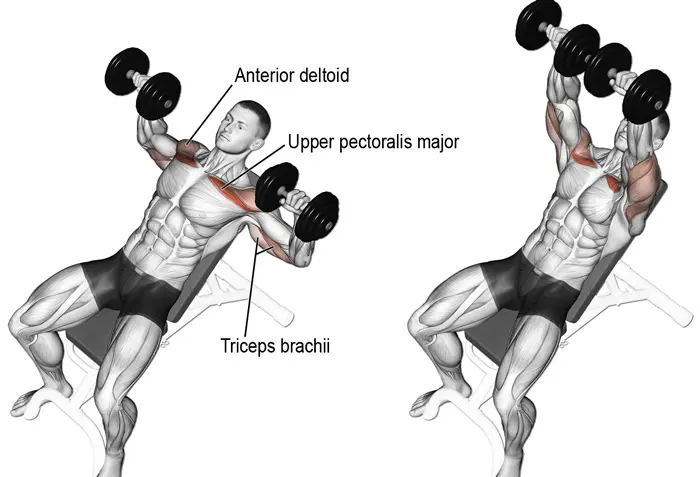
- Set your bench to 30 to 45 degrees and lie back with a dumbbell in each hand, pressed to arms’ length. Brace your legs and core and pull your shoulders down and back.
- Bend your arms and lower the dumbbells down to just outside your chest. Get a good stretch, but do not hyperextend your shoulders.
- Press the weights back up and repeat. Stop just short of locking your elbows.
3- Cable flyes
- Attach D-shaped handles to the uppermost cables of a crossover machine. Take one handle in each hand. Adopt a split stance for balance. Bend your elbows slightly, but then keep them rigid. Lean forward slightly from your hips.
- Without bending your arms, bring your arms forward and down, so your hands meet about a foot in front of your hips.
- Open your arms wide and repeat.
4- Seated dumbbell shoulder press
- Adjust your bench so that the backrest is vertical or set to about 80-degrees.
- Sit on the bench with a dumbbell in each hand. Hold the dumbbells in front of your shoulders with your palms facing forward.
- Keeping your wrists straight, press the weights up and overhead. Stop just short of locking your elbows.
- Lower the weights back to your shoulders and repeat.
5- Dumbbell side lateral raises
- Stand with your feet roughly shoulder-width apart and a dumbbell in each hand. Your arms should be by your sides with your palms facing your thighs. Bend your arms slightly, but then keep them rigid.
- Raise the weights up and out to about shoulder-height. Your palms should be facing the floor at the top of the movement.
- Lower the weights and repeat.
6- Dips
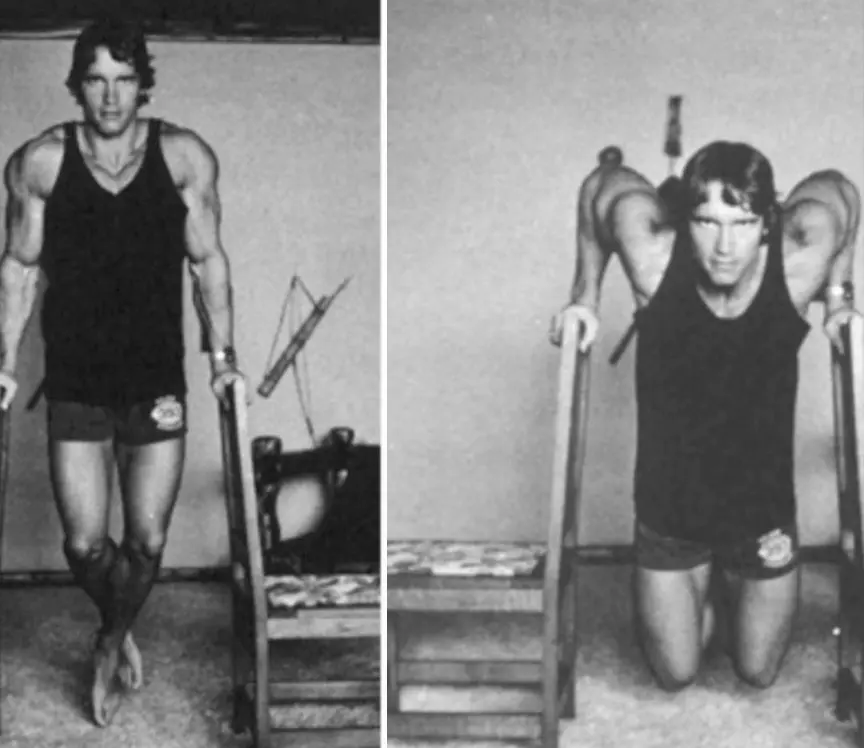
- Grab the handles of the dip station, so that they are roughly shoulder-width apart. Step or jump up and support your weight on straight arms. Push your shoulders down and back. Bend your legs and cross your feet.
- Bend your elbows and descend until your upper arms are roughly parallel to the floor. Decrease the range of motion if your shoulders hurt.
- Push yourself back up and repeat.
7- Triceps pushdowns
- Attach a straight, EZ, rope, or V-shaped handle to a high pulley machine. Grab it with an overhand grip. Tuck your elbows down and into your sides and brace your abs.
- Extend your arms and push the handle down to your thighs. Keep your upper body stationary.
- Bend your arms as far as you can without moving your upper arms away from your sides and repeat.
Pull workout
- Pull-ups – 3 sets of 8 reps
- Lat pulldowns – 3 sets of 10 reps
- Single-arm dumbbell rows – 3 sets of 12 reps
- Barbell biceps curls – 3 sets of 8 reps
- Zottman curls – 3 sets of 10 reps
- Dumbbell concentration curls – 3 sets of 12 reps per arm
Exercise descriptions
1- Pull-ups
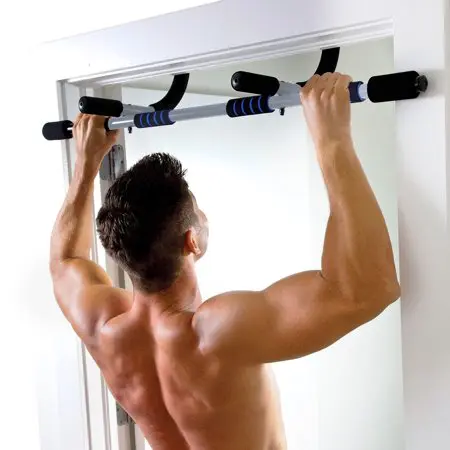
- Reach up and grab your bar with an overhand, slightly wider than shoulder-width grip. Hang with your arms straight, and your shoulders pulled down and back. Bend your legs and cross your feet.
- Bend your arms, lift your chest, and pull your chin up and over the bar.
- Lower yourself down under control and repeat.
2- Lat pulldowns
- Grab the bar with an overhand, slightly wider than shoulder-width grip. Sit down, so your legs are under the thigh pads. Lean back slightly and lift your chest.
- Bend your arms and pull the bar down to your upper chest. Lead with your elbows and keep your wrists straight.
- Extend your arms and repeat.
3- Single-arm dumbbell rows
- Hold a dumbbell in one hand and stand with your feet about hip-width apart. Bend your knees slightly. Lean forward and place your free hand on a knee-high bench for support. Let the weight hang down from your shoulder, which should be pulled down and back.
- Bend your arm and pull the weight up and into your ribs.
- Extend your arm and repeat.
4- Barbell biceps curls
- Hold a barbell with an underhand, hip-width grip. Stand with your feet about shoulder-width apart, knees slightly bent for balance. Brace your abs.
- Bend your arms and curl the weight up to your shoulders. Keep your upper arms next to your sides and your torso upright.
- Lower the weight and repeat.
5- Zottman curls
- Sit or stand with a dumbbell in each hand. Your palms should be facing your legs.
- Bend your arms and curl the weights up. At the top of the movement, your palms should be facing your shoulders.
- Rotate your wrists, so your palms are now facing away from you.
- Lower the weights and return to the starting position.
- Reset your hands and repeat.
6- Dumbbell concentration curls
- Sit on an exercise bench with a dumbbell in one hand. Lean forward and place your upper arm against the inside of your thigh. Place your free hand on your other leg for stability.
- Bend your arm and curl the weight up to your shoulder.
- Extend your arm and repeat.
- Do the same number of reps on each arm.
Legs workout
- Barbell back squats – 3 sets of 8 reps
- Romanian deadlift – 3 sets of 10 reps
- Leg press – 3 sets of 10 reps
- Leg curls – 3 sets of 12 reps
- Bulgarian split squats – 3 sets of 10 reps per legs
- Standing calf raises – 3 sets of 12 reps
- Seated calf raises – 3 sets of 12 reps
Exercise descriptions
1- Barbell back squats
- Using a squat rack for safety, rest and hold a barbell across your upper back. Step out and into a shoulder-width stance, toes turned slightly outward. Brace your abs.
- Push your hips back, bend your knees, and squat down until your thighs are about parallel to the floor. Do not round your lower back.
- Stand back up and repeat.
2- Romanian deadlift
- Stand with your feet about hip-width apart, knees slightly bent but rigid. Hold a barbell with a shoulder-width, overhand grip. Brace your abs.
- Push your hips back and lean forward, lowering the bar down the front of your legs. Do not round your lower back.
- Stand back up straight and repeat.
3- Leg press
- Lie on the leg press and place your feet on the footplate, roughly shoulder-width apart.
- Unrack the weight and disengage the safety bars.
- Bend your legs and lower the weight as far as you can without rounding your lower back.
- Push the weight back up and repeat. Do not lock your knees between reps.
4- Leg curls
- Lie face down on the leg curl machine, so that your knees are in line with the machine’s pivot point, and the leg pad is resting on your lower calves.
- Bend your legs and curl the weight up until the pad touches the back of your upper legs.
- Extend your legs, but don’t let the weights touch.
5- Bulgarian split squats
- Stand with a dumbbell in each hand and your back to a knee-high bench. Bend one leg and place your foot on the bench behind you. Hop forward and into a split stance, keeping your torso upright.
- Bend your legs and lower your rearmost knee down toward the floor.
- Stand back up and repeat.
- Do the same number of reps on each leg.
6- Standing calf raises
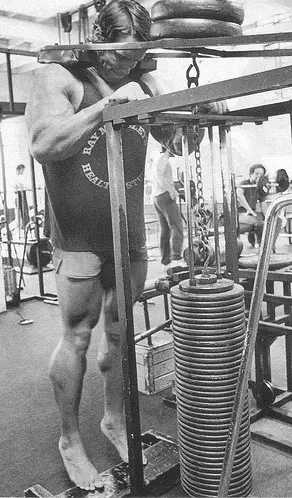
- Place the balls of your feet on the footplate and your shoulders under the pads. Brace your abs and stand up straight.
- Lower your heels as far down toward the floor as your flexibility allows.
- Rise up on to your tiptoes and repeat.
7- Seated calf raises
- Sit on the calf raise machine and place your feet on the edge of the footrest. Position the leg pads, so they are across your thighs.
- Unrack the weight and then lower your heels as far down as your flexibility allows.
- Push up on to your tiptoes and repeat.
Other considerations for your PPL success
PPL is an excellent way to organize your workouts, especially if you’ve got muscle or strength building on your mind. It’s a tried and tested approach that has helped generations of bodybuilders pack on mass.
But, as good as this program is, you need to pay attention to what you do outside the gym too.
To make the best progress possible – don’t neglect the following:
- Recovery and sleep
- Nutrition
Recovery and sleep– your muscles don’t grow during your workouts. In fact, training breaks them down. You need to rest and sleep to give them a chance to grow bigger and stronger.
That means you should get between 7-9 hours of sleep per night and avoid doing too much additional physical activity between workouts.
Some light cardio a couple of times a week is fine, but doing an hour a day while expecting to build muscle is not. Save your energy for muscle growth and repair.
Nutrition– the food you eat provides the energy and nutrients you need to train, recover, and grow. You are what you eat, or so the saying goes.
If you fail to eat enough healthy food, your body won’t have the building blocks it needs to put your muscles back together again after training. You may also find that you don’t have the energy to work out long or hard enough to get the results you want.
To build muscle or get stronger, you must take nutrition seriously. Missed meals, junk food, or just not eating enough will all hurt your progress.
Eat 4-6 meals per day that contain plenty of protein, complex carbs, and healthy fats. You can learn more about eating for muscle building in this article.
Wrapping up
The push-pull-legs training split is part of bodybuilding history. It’s an iconic workout structure that almost every lifter should try at least once. For many, it’s the perfect training split. Because it’s easy to modify, beginner, intermediate, and advanced exercisers can use this approach, providing they change it to meet their needs and abilities.
If you need a new training program, take PPL for a spin, but remember that diet and recovery are every bit as important for your success as your workouts.

